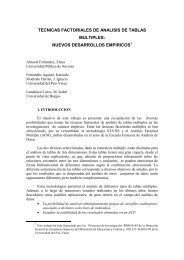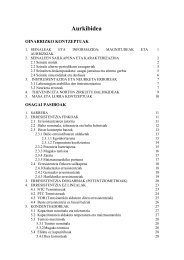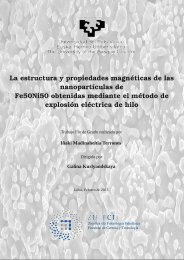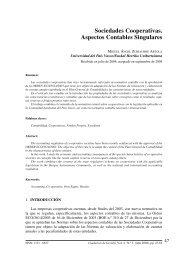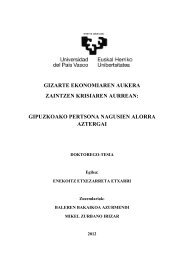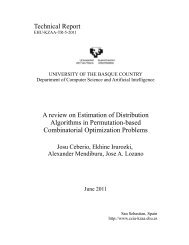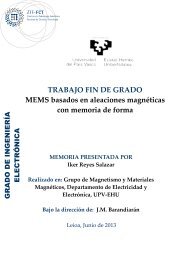Ï - ADDI
Ï - ADDI
Ï - ADDI
- No tags were found...
You also want an ePaper? Increase the reach of your titles
YUMPU automatically turns print PDFs into web optimized ePapers that Google loves.
5.1. A general spin-strain phase diagram for a monovacancy in graphene 109Figure 5.3: Variation in total energy per atom (A), spin moment (B), and bond length (C) versus strain for threedifferent configurations of vacancy in the 10×10 supercell: high-spin flat (triangles), low-spin flat (squares)and low-spin rippled (circles). The inset in panel (a) details the change in total energy with respect to thelow-spin solutions at about zero strain. The filled and empty symbols in panel (C) represent the 1-2 and 1-1distances, respectively (see the inset of Figure 5.1 for atomic labels). The marks given by stars refer to theaverage distances as the geometry departs from the usual vacancy to the structure in Figure 5.1B. Note that themagnetism disappears at a strain of ∼2% when allowing for out-of-plane deformations.structural changes on the magnetic and electronic properties of the vacancies. We first considerthe case of zero strain, i.e. at the equilibrium lattice constant. The usual reconstruction [42,121] is accompanied by a decrease in the 1-1 distance in Figure 5.1 and an increase in the1-2 distances. The two dangling bonds in the type 1 atoms are thus saturated while atom 2remains uncoordinated. It is the polarization of the corresponding dangling bond that is themain reason behind the appearance of a spin moment of ∼1.5µ B associated with the carbonmonovacancy. However, we were able to stabilize another reconstruction characterized bya different structural distortion, in which the 1-2 distance decreases, while the 1-1 distanceincreases [see the local structures and distances in Fig.5.3B,C]. This structure has a larger spinmoment of ∼1.82µ B . We refer to this latter structure as the high-spin (HS) configuration, andto the former as the low-spin (LS) configuration. At zero strain the LS structure is more stablethan the HS by around 250 meV.





